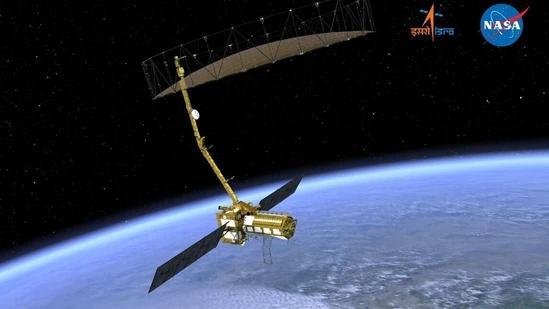
Why will NISAR not work for the first 90 days after launch?
The Indian Space Research Organisation (ISRO) and NASA are set to launch their joint Earth observation mission, NISAR, on July 30. This satellite is designed to study the Earth’s surface and monitor changes in the environment. As exciting as this launch is, there’s a catch – NISAR won’t start operating immediately. Instead, it will undergo a 90-day In-Orbit Checkout phase, during which engineers will carefully activate its systems, test communications, and calibrate its radar systems to ensure accuracy.
But why is this necessary? What’s the purpose of this long and seemingly slow process? In this blog post, we’ll delve into the reasons behind NISAR’s delayed start and explore the importance of this critical phase.
What is NISAR?
Before we dive into the details, let’s quickly introduce NISAR. NISAR (NASA-ISRO Synthetic Aperture Radar) is a joint mission between ISRO and NASA to study the Earth’s surface using radar technology. The satellite will be equipped with two radar systems operating in L-band and S-band frequencies, which will allow it to gather data on the Earth’s surface, atmosphere, and oceans. This data will be used to monitor changes in the environment, such as land subsidence, glacier movement, and soil moisture levels.
In-Orbit Checkout phase
So, what exactly will happen during the 90-day In-Orbit Checkout phase? This critical phase is designed to ensure that NISAR’s systems are functioning correctly and that it’s ready to start collecting data. Here are some of the key activities that will take place during this phase:
- System Activation: Engineers will activate NISAR’s systems step by step, including its radar systems, communication equipment, and power systems.
- Communication Tests: NISAR’s communication systems will be tested to ensure that it can establish a stable link with ground stations and transmit data accurately.
- Radar Calibration: The radar systems will be precisely calibrated to ensure that they’re measuring the correct frequencies and producing accurate data.
- Orbit and Attitude Control: NISAR’s attitude control systems will be tested to ensure that it’s maintaining the correct orientation and orbit.
These activities are crucial to ensure that NISAR is functioning correctly and that its data is accurate and reliable. By taking the time to complete these tasks, engineers can identify and resolve any issues that may arise, ensuring that the satellite performs optimally once it starts collecting data.
Why the delay?
So, why can’t NISAR start operating immediately after launch? There are several reasons why this delay is necessary:
- Safety: Launching a satellite without fully testing its systems can pose a risk to the satellite itself and to ground stations. By taking the time to complete the In-Orbit Checkout phase, engineers can ensure that NISAR is safe to operate.
- Accuracy: Radar systems require precise calibration to produce accurate data. Rushing the process can lead to inaccurate results, which would render the data useless.
- Data Quality: The In-Orbit Checkout phase allows engineers to test NISAR’s systems under various conditions, such as different temperatures and orbits. This ensures that the satellite can collect high-quality data consistently.
Conclusion
NISAR’s 90-day In-Orbit Checkout phase may seem like a slow and tedious process, but it’s a critical step in ensuring that the satellite operates correctly and produces accurate data. By taking the time to complete these tasks, engineers can guarantee that NISAR will be able to collect valuable data on the Earth’s surface and monitor changes in the environment.
Once NISAR completes its In-Orbit Checkout phase, it will begin its mission to map the Earth, providing valuable insights into the planet’s changing landscape. With its advanced radar systems and precise calibration, NISAR is poised to become a game-changer in the field of Earth observation.
Source:






